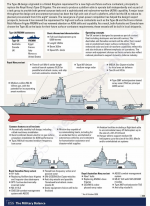- Reaction score
- 24,845
- Points
- 1,360
...and provide ‘Payments to Individuals’ amounts for the same periods. That EI alone, in the same period as CSC is TRILLIONS of dollars, would indeed help put 0.017 trillion dollars for a key national defence capability into relative perspective.As much as this is a cost issue, in my opinion this is monumental "effective communicate failure" issue.
DND/Government should present pricing for all military programs in a format citizens can relate to and intuitively understand.
1. What's the "sticker price" (to walk out of the store or showroom with the item)?
2. What's the anticipated "parts for maintenance and service" cost per annum?
3. What's the "crew costs" per annum?
Full life cycle budgeting is absolutely appropriate for some things like assessing RFQ submissions. But for communication to the public? It's akin to the CRA posting a news release: "Average Federal Income Tax is going up to $2 million per person!", with the fine print then explaining that's actually for the average total over their working lives. Although factually accurate, the information is in a context that most people can't relate to easily, and therefore ends up being extremely misleading....which does a disservice to everyone.







